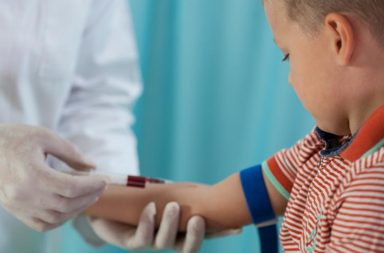Pharmacotherapeutics in children follows the same principles as pharmacotherapy for adults (1); and focuses primarily on the physiology of the children as well as the pharmacology of the medications. Children react to medications differently i.e., incomplete absorption, distribution, metabolism and excretion, causing increased or decreased efficacy or safety (2).
Keivan Ahmadi1,2; Stefan Kutzsche3. 1Department of Pharmacy Practice, School of Pharmacy, International Medical University (IMU), Kuala Lumpur, Malaysia. 2Global Public Health, School of Medicine and Health Sciences, Monash University, Sunway Campus, Selangor, Malaysia. 3IMU Centre for Education (ICE), International Medical University (IMU), Kuala Lumpur, Malaysia
One may, reasonably, argue that the use of therapeutic agents in children is challenging clinically and psychologically. Until recent years, children were not allowed to be recruited as study subjects in the clinical trials (3). Therefore, extrapolating the medication dosage regimens to cater for the therapeutic needs of children has been rather a mathematical, and not necessarily a clinical approach.
Medication taking behavior in children is an integral component of pediatric pharmacotherapy. The inability to adhere to the medication(s) that treat chronicity in children could be one of the main reasons for the therapeutic failure (4). To achieve therapeutic success in [younger] children, however, parents as the caregivers play a crucial role. Understanding the benefits of the drugs and the importance of concordance to medication would determine the adherence to the regimen (5). In the pediatric population, the parent(s) or caregiver(s) should understand and acknowledge the importance of compliance to the medications (5–7). Therefore, it is important to empower the parents, as the caregivers, by educating them about the therapeutic agents and their possible side effects. Questions may arise that who should educate the parents and how?
It seems that pediatric pharmacotherapy needs to be complemented and triangulated with professionalism and psychology.
In the process of professionalization, healthcare professionals, constantly acquire the knowledge and skills of their profession to provide high quality care to their clients, patients, and in general the members of the society (8). The provision of care to children, however, could be more challenging because the healthcare professional should: a) ensure the safety and efficacy of the medication; b) build the trust and convince the parents on the safety profile of the therapeutic agent; c) understand and acknowledge the parents’ concerns; and d) constantly educate the parents and children on the importance of compliance.
Care for children with chronic diseases, is an emotional and draining task for the parents and/or caregivers (9). Healthcare professionals, therefore, have to understand and empathize with the emotions of parents in order to build rapport with them. In order to empathize with someone and get connected at some emotional levels, one needs to have high emotional quotient (EQ); and not necessarily high intelligence quotient (IQ).
It seems that pediatric pharmacotherapy needs to be complemented and triangulated with professionalism and psychology. Unless the right medication is selected; and unless the healthcare professional understands and empathizes with the parents and/or caregivers; and unless the parents and/or caregivers are convinced on the efficacy and safety of the medication; and unless the parents and/or caregivers are directly involved in the therapy, the pediatric pharmacotherapy might not produce the desired outcomes.
References:
- Casavant M, Griffith J, Brunton L. Pediatric Pharmacotherapy Part 1: The History of Pediatric Drug Therapy: Learning from Errors, Not Trials. Goodman & Gilman Online Updates [Internet]. New York, NY: The McGraw-Hill Companies; 2011 [cited 2014 Oct 10]. Available from: http://mhmedical.com/content.aspx?aid=1001636
- Benavides S, Nahata M, Chicella M, Condren M, Eiland E, Hagemann T, et al., editors. Pediatric Pharmacotherapy. Lenexa, KS: American College of Clinical Pharmacy; 2013. 910 p.
- WHO | Clinical Trials in Children [Internet]. WHO. [cited 2014 Oct 24]. Available from: http://www.who.int/ictrp/child/ethics/en/
- Leickly FE, Wade SL, Crain E, Kruszon-Moran D, Wright EC, Evans R. Self-reported adherence, management behavior, and barriers to care after an emergency department visit by inner city children with asthma. Pediatrics. 1998 May;101(5):E8.
- Iio M, Ohya Y, Morisawa Y, Watanabe H, Narita M, Futamura M, et al. Factors influencing parental medication adherence in pediatric asthma. Arerugi. 2011 May;60(5):593–603.
- Williams PL, Storm D, Montepiedra G, Nichols S, Kammerer B, Sirois PA, et al. Predictors of Adherence to Antiretroviral Medications in Children and Adolescents With HIV Infection. Pediatrics. 2006 Dec 1;118(6):e1745–e1757.
- McQuaid EL, Kopel SJ, Klein RB, Fritz GK. Medication Adherence in Pediatric Asthma: Reasoning, Responsibility, and Behavior. J Pediatr Psychol. 2003 Jul 1;28(5):323–33.
- Savage DA. The Professions in Theory and History: the Case of Pharmacy [Internet]. EconWPA; 1994 [cited 2013 Jun 17]. Report No.: 9406001. Available from: http://ideas.repec.org/p/wpa/wuwpio/9406001.html
- Fuentes C, Herskovic V, Heysen J, Tentori M. Towards a Technology for Caregivers’ Emotional Expression and Self-reflection. In: Urzaiz G, Ochoa SF, Bravo J, Chen LL, Oliveira J, editors. Ubiquitous Computing and Ambient Intelligence Context-Awareness and Context-Driven Interaction [Internet]. Springer International Publishing; 2013 [cited 2014 Oct 23]. p. 143–50. Available from: http://link.springer.com/chapter/10.1007/978-3-319-03176-7_19


